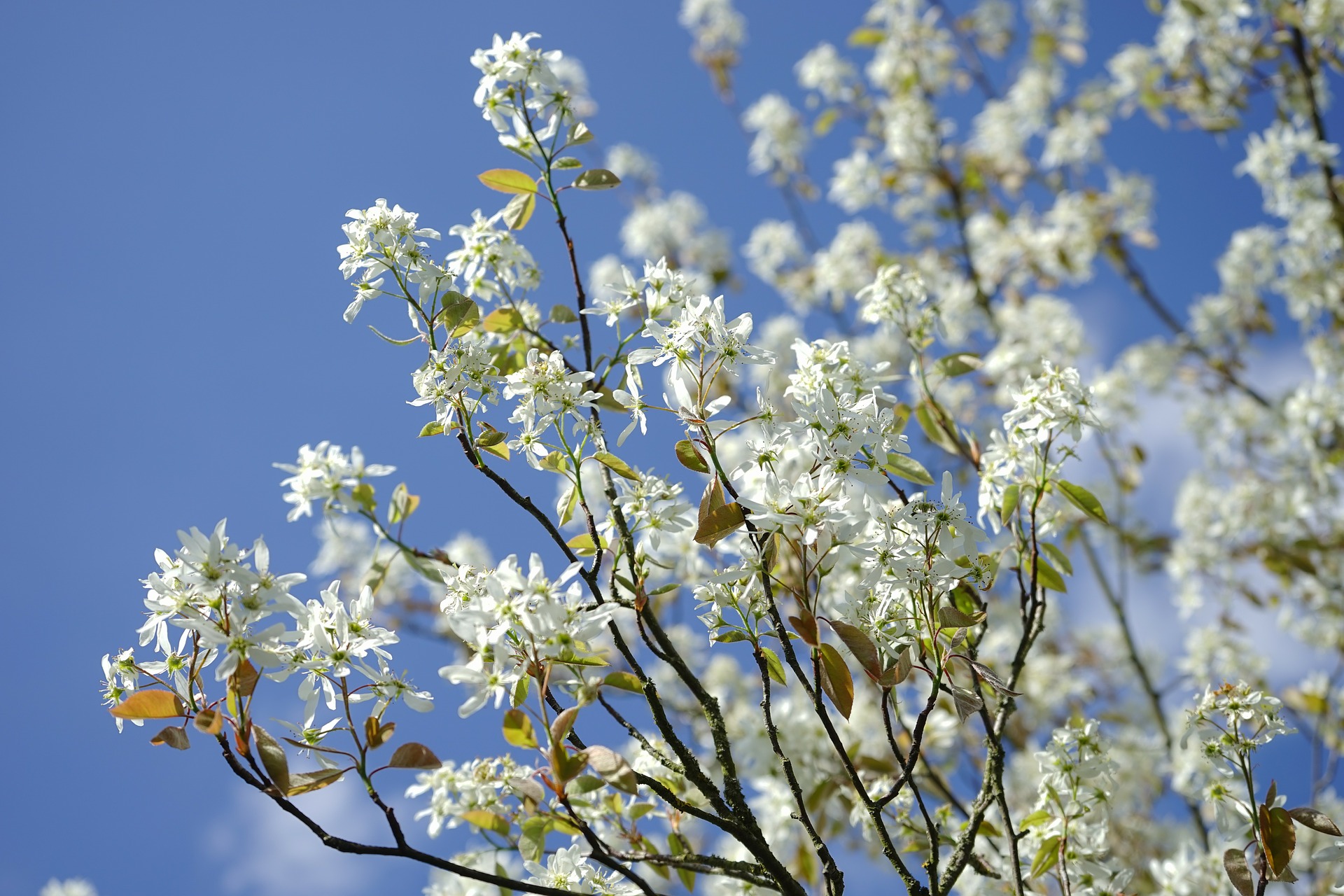
Associate the Amelanchier
All our ideas for pairing serviceberry with other plants
Contents
There are shrubs that combine numerous advantages, leaving any nature enthusiast in awe. The amelanchier belongs to this category of plants that fit perfectly into any ornamental garden. Simply because it has everything to please: a spectacular early spring flowering that adorns it in pure white, delicious edible berries, and foliage that takes on spicy and coppery hues in autumn. Not to mention its ease of cultivation, great hardiness, and adaptability to all situations. Finally, one cannot mention the amelanchier without acknowledging the elegance and lightness that emanate from its compact silhouette. These qualities allow it to create stunning garden scenes, whether as a standalone to highlight its features, or alongside other plants in a free-form hedge with rustic accents, a natural border, a monochrome display, or in front of a green backdrop.
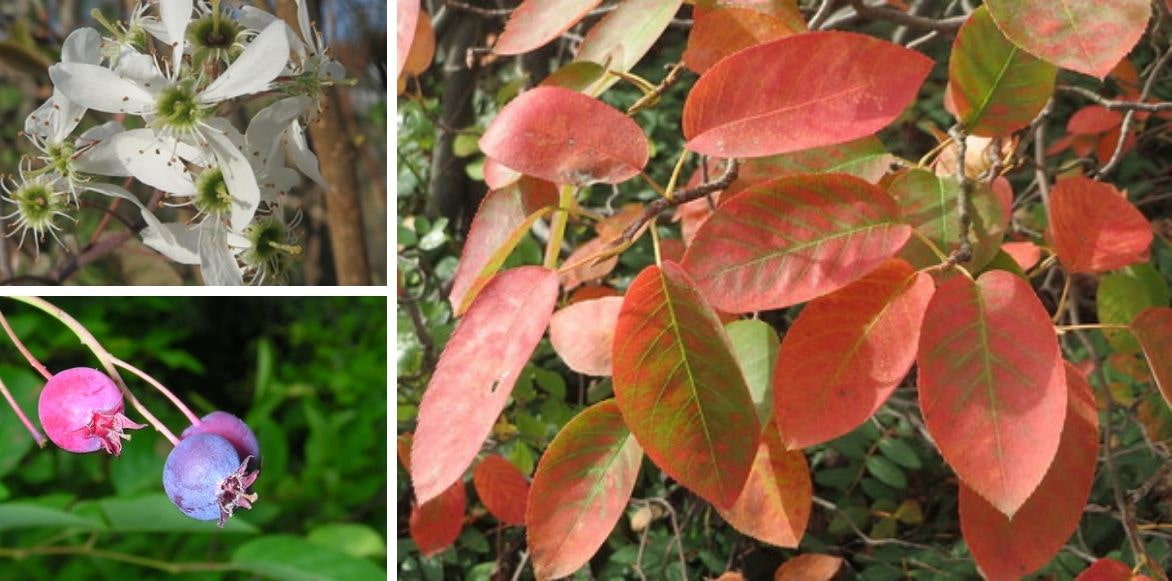
The amelanchier boasts numerous advantages throughout the seasons
Discover all our ideas for pairing with the amelanchier, a shrub that is as beautiful as it is easy to care for
To learn everything about the amelanchier: Amelanchier, to plant, to prune, to grow
In a free and wild hedge
Pushing generally in coppice, meaning on several trunks, the serviceberry alternates between a small tree and a large bush depending on the varieties: the Amelanchier canadensis, the most common, has a dense and upright habit, the Amelanchier ‘Ballerina’ is more compact, and the Amelanchier x grandiflora has a more bushy silhouette. In any case, none exceed 4 to 5 metres, a height that makes them perfect candidates for free, country-style hedges, which will delight the eyes with their natural charm.
Throughout the seasons, the serviceberry asserts its presence within a hedge with its immaculate white flowering in April-May, the appearance of its berries, a delight for birds, in summer, and its autumn foliage in warm colours. Especially if associated with an Exochorda, aptly named the pearl tree, which, like it, dons its beautiful white attire in the early days of spring. If you want to create a hedge dressed entirely in white, add a Snowball Viburnum (Viburnum opulus Roseum), spiraeas, an Osmanthus, or even a Mexican Orange Blossom (Choisya). To add a splash of colour, incorporate a weigela, a Mahonia, or a Japanese Rose to brighten up the hedge.
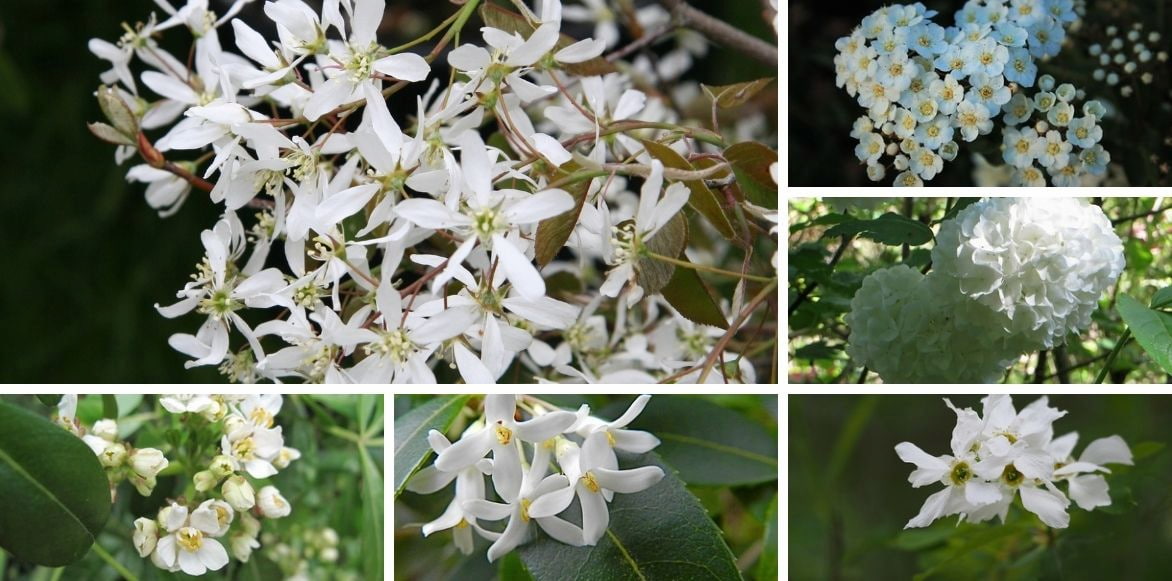
Serviceberry associated with an Exochorda, a Snowball Viburnum, a spiraea, an Osmanthus, and a Choisya
The false holly mahonia plays on both flowering and the presence of berries. For a free fruiting hedge, you can thus associate the serviceberry with other berry-bearing bushes like cotoneaster or the common Firethorn (Pyracantha). As for the berries of the Himalayan Honeysuckle (Leycesteria), with their purplish hues, they appear just after those of the serviceberry.
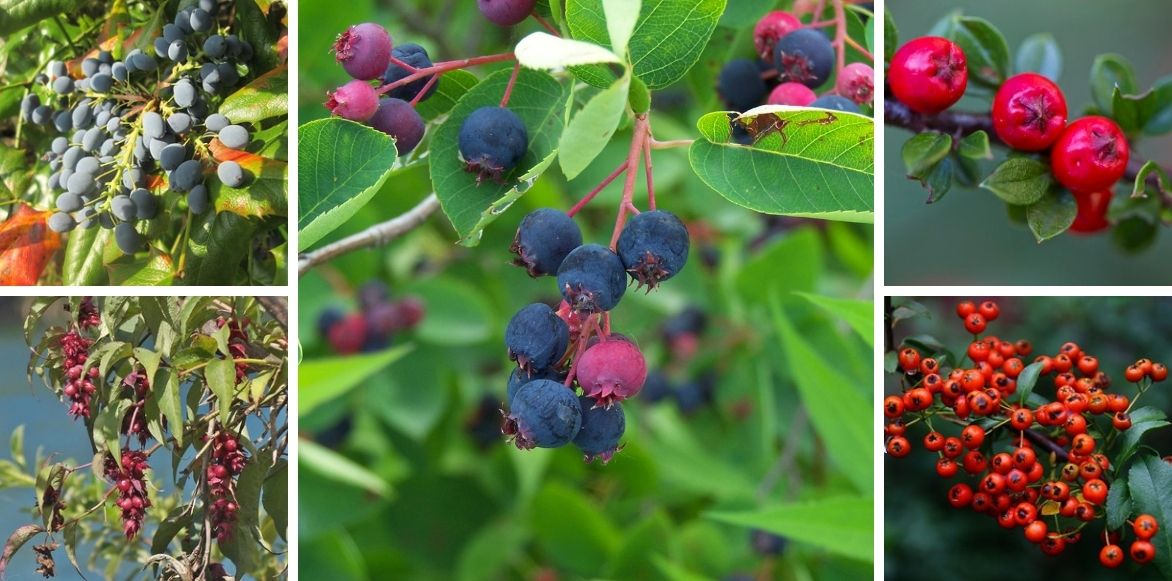
Serviceberry, mahonia, cotoneaster, pyracantha, and leycesteria
Read also
Hedge for birds: which shrubs to choose?In a natural border
Particularly versatile, the serviceberry can also find its place at the back of a border. Moreover, it thrives in full sun as long as it’s not too scorching, or in semi-shade, preferably moist, although dry shade does not deter it either. It grows in simple garden soil, provided it is well-drained. Due to this adaptability, the serviceberry can happily coexist with many other border plants. With Deutzia, the white Japanese quince (Chaenomeles), the white lilac (Syringa), the mock orange (Philadelphus), or the white dogwood (Cornus kousa Chinensis), it sees life in white. And with the Japanese flowering cherry, it creates a most romantic atmosphere.
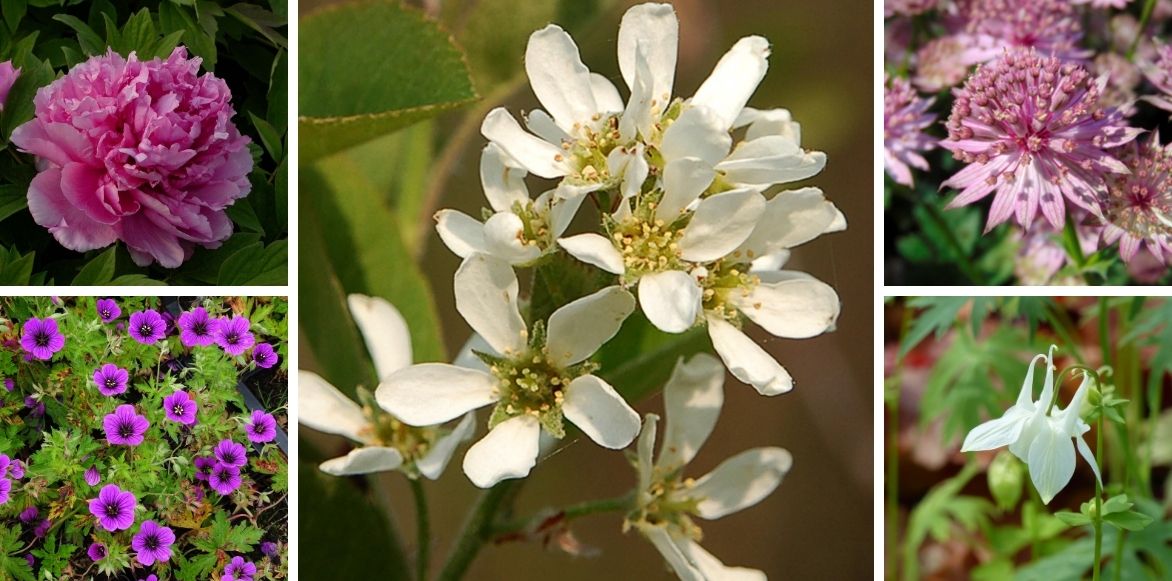
Serviceberry with peonies, columbines, masterworts, and hardy geraniums
If you plant elegant peonies, graceful columbines, vigorous hardy geraniums, or delightful masterworts at its feet, the serviceberry will protect them with its luminous foliage.
Discover other Saskatoon - Juneberry
View all →Available in 1 sizes
Available in 5 sizes
Available in 2 sizes
Available in 1 sizes
Available in 1 sizes
Available in 1 sizes
Available in 1 sizes
Available in 1 sizes
Available in 1 sizes
Available in 1 sizes
In the centre of a shady border
Because it thrives in partial shade, don’t hesitate to make Amelanchier the star of a bed where the light is limited. While it can play the leading role that draws all eyes from spring to autumn, you can also pair it with plants that will flourish in its shade. For instance, Hakonechloa macra Nicolas or Japanese forest grass with its fine trailing panicles, tree ferns, delicate epimediums, and elegant hostas all benefit from being associated with Amelanchier.
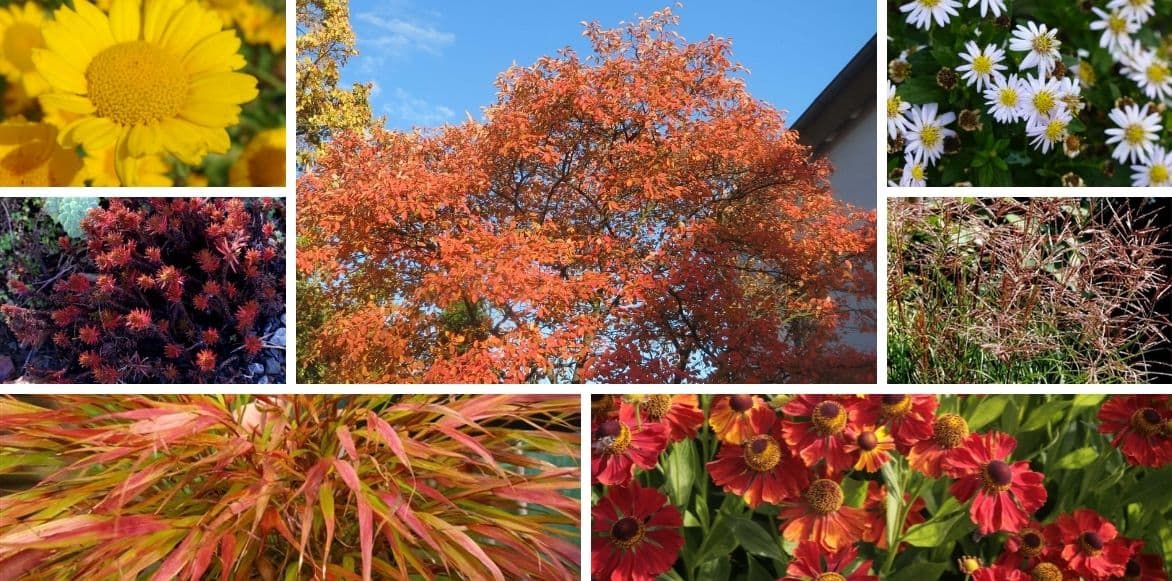
Amelanchier with Hakonechloa macra Nicolas, Chrysanthemum, Helenium Baudirektor Linne, Miscanthus, Chocolate Cherry Sedum, Aster
An Amelanchier that in autumn showcases a palette of colours ranging from copper red to purple and orange, undeniably reminiscent of the hues of fragrant spices from afar. These warm tones will be highlighted by the late flowering of asters, miscanthus, heleniums, sedums, or chrysanthemums.
With acid soil plants
The amelanchier is quite undemanding in terms of soil, and it can also thrive among heather-loving plants. Once again, it takes centre stage at the back of a border alongside azaleas, rhododendrons, camellias, daphnes, and Japanese andromedas… with their early flowering. The pale pink of the flowers of Daphne odora ‘Sweet Amethyst’ pairs beautifully with those of the amelanchier, as do those of Camellia Look Away, delightfully variegated in pink and white. Pieris japonica ‘Little Heath’ with its evergreen, marginate foliage will highlight the flowering of the amelanchier.
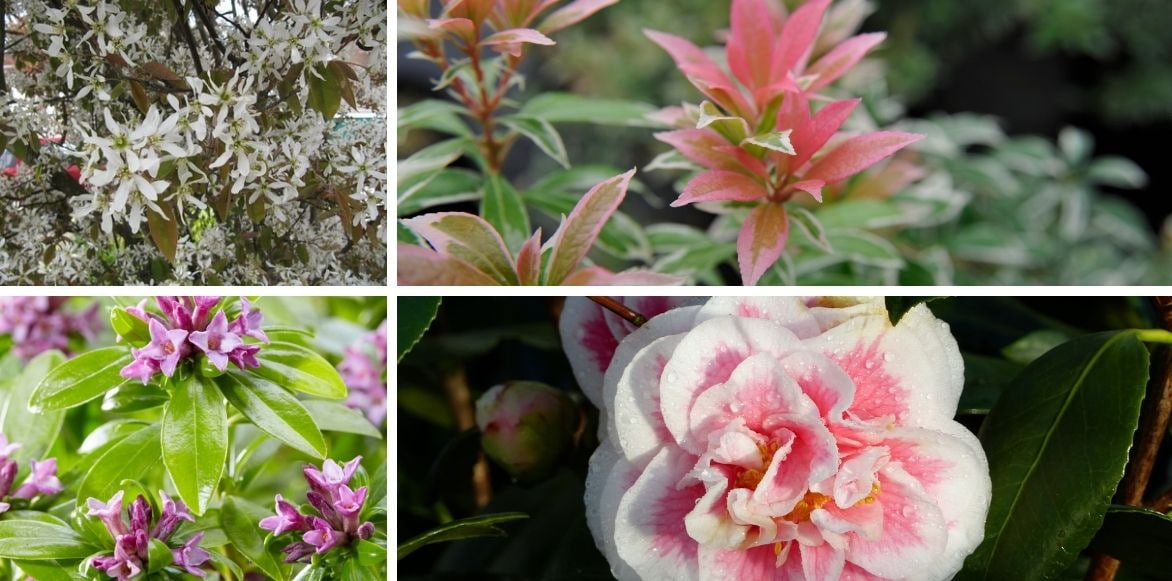
Amelanchier with Daphne odora ‘Sweet Amethyst’, Camellia Look Away, and Pieris japonica ‘Little Heath’
Surrounded by spring bulbs
One can never praise the bright and generous flowering of the Amelanchier enough, which is adorned with small star-shaped flowers in white or lightly tinted pink. Particularly melliferous, some fill the spring air with their fragrance. It is precisely at the very beginning of spring that the delicate flowers of the bulbs gently bloom. From September onwards, consider planting them at the base of the Amelanchier, in the short grass meadow, scattered here and there, or as a covering tapetum. You can either play with monochromy by multiplying the daffodils, scillas, white muscaris, associated with white Cyclamen coum, or Iphieion uniflorum ‘White Star’. If you aspire to more colours, think of tulips, crocuses, and hyacinths.
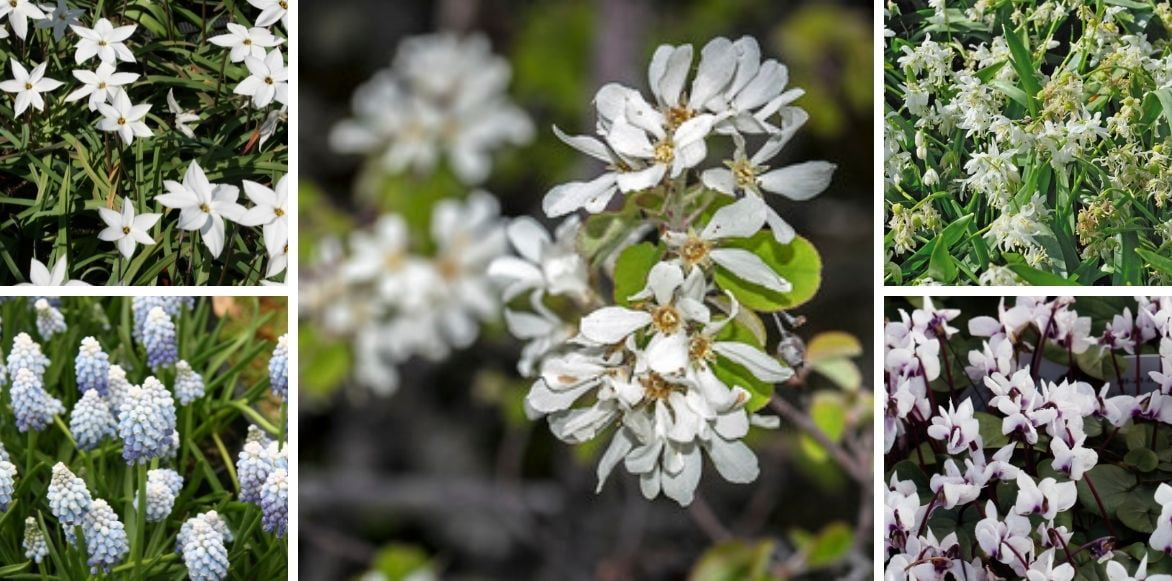
Amelanchier with scillas, white muscari, white Cyclamen coum, and Iphieion uniflorum ‘White Star’
In the foreground of a curtain of trees
To give full spring and autumn power to the amelanchier, plant it in front of a curtain of trees composed of conifers, common hornbeams (Carpinus betulus), Cotinus, and Parrotias… The succession of colours will be a grand spectacle where the amelanchier will play the conductor.
- Subscribe!
- Contents
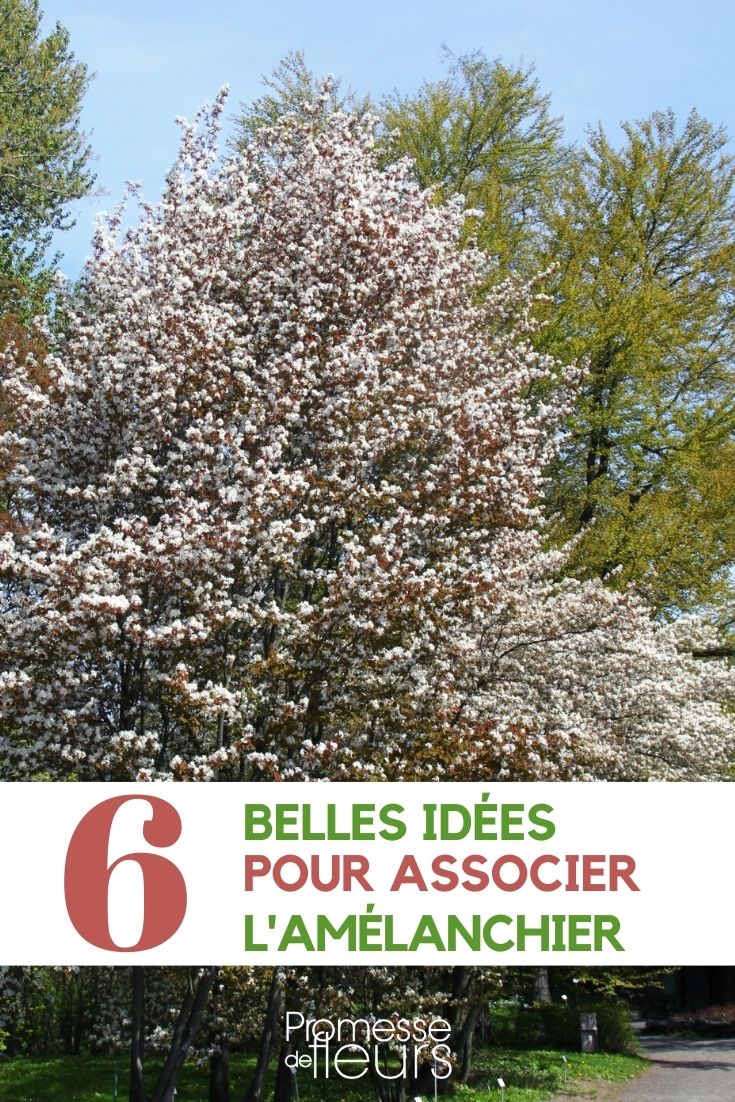































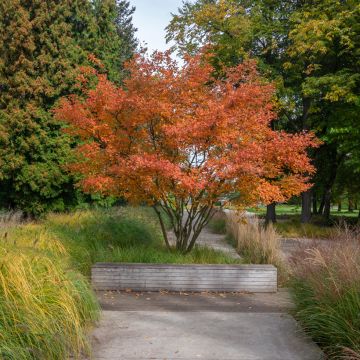
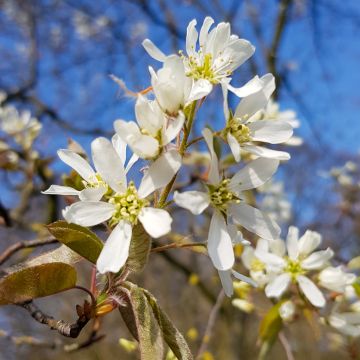
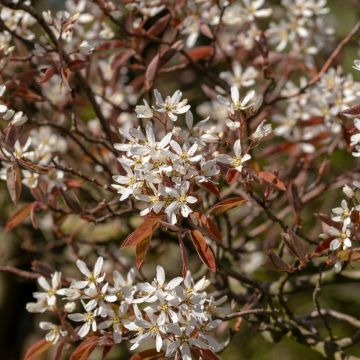
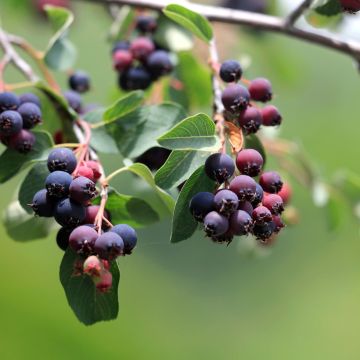
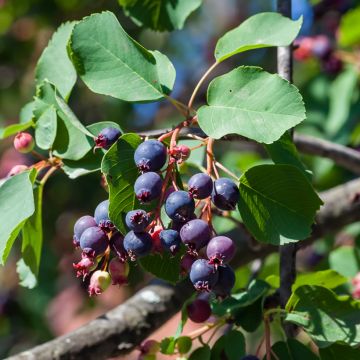
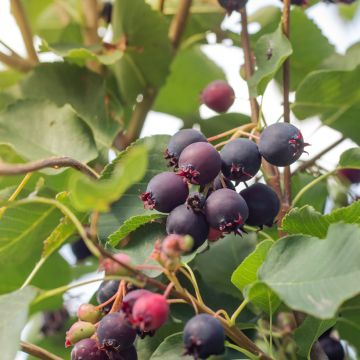
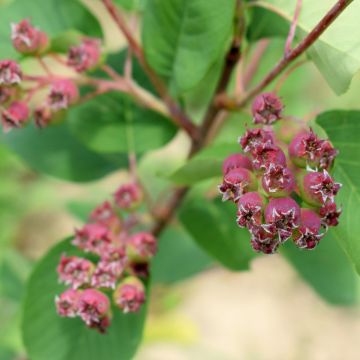
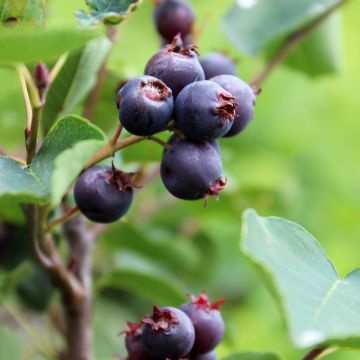
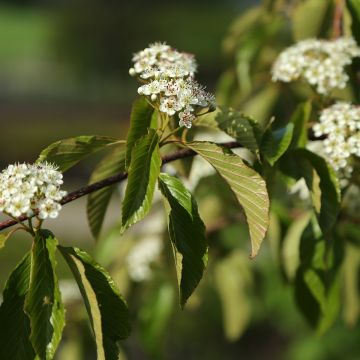

Comments